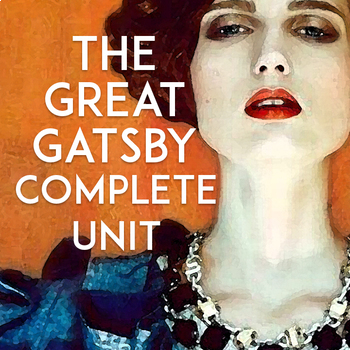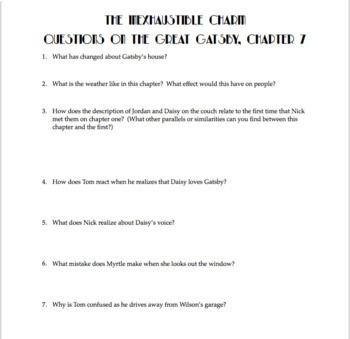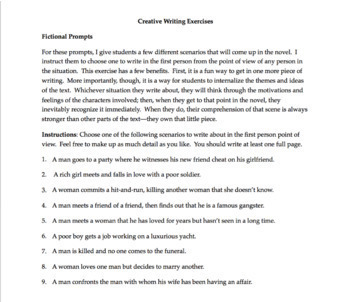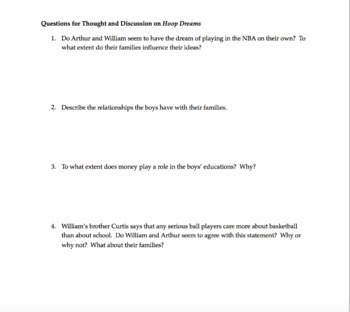The Great Gatsby Close Reading | F. Scott Fitzgerald | The American Dream
- Zip
- Google Apps™
- Internet Activities

What educators are saying
Description
Tired of superficial resources on The Great Gatsby that just go through the motions when it comes to truly examining the important questions?
Why do we lie to ourselves and others? Should we do everything for love? What is the American Dream? How do factors such as race, class, or gender help or hinder people from achieving their dreams?
Fitzgerald’s classic novel is classic for a reason—in this short, lovely text, he asks some of the biggest questions of our times. But you need to make sure that your unit on Gatsby is truly giving this novel its due.
If you want to teach a unit on Gatsby that gives your students a depth of understanding, that engenders empathy, and that gets them thinking critically about important social justice issues, you’ll need to go beyond the basic questions focusing on the green light and Daisy’s voice, and go beyond the standard canonical texts written by dead white males.
Incorporating diverse supplementary texts, close reading and critical thinking, and a focus on the theme of the American Dream through the lens of intersectionality (race, class, and gender), this innovative unit will engage, challenge, and inspire your students.
This 4-8 week unit contains enough variety of materials, real-life connections, innovative approaches to the information, and concrete text-based questions to keep students engaged, challenged, and having fun throughout.
When you teach with The Great Gatsby with this innovative unit you will:
- Get your students excited to start the novel by engaging them in powerful pre-reading activities focusing on fun creative writing prompts, engaging discussion questions, and a fascinating TED Talk about how easily money makes us behave badly.
- Begin each class period with engaging bellringer prompts designed to get your classes calm, focused, and thinking about the essential questions of the unit.
- See a noted improvement in your students’ close reading skills and reading comprehension skills when they utilize the scaffolded, no-prep questions.
- Make sure your students are engaging with the text and working to interpret it on their own when you point them to the relevant passages quoted in the complete answer keys.
- Bring your students’ writing to the next level with daily prompts, essay questions, innovative creative writing assignments, and step-by-step writing instructions.
- Help your classes to understand the historical context of the novel by experiencing music, art, and film from the period first-hand.
- Be sure that your students have read the chapters by giving them reading-check quizzes which have been referenced against an online summary.
- Add complexity, diversity, and variety to your plans when you incorporate stories, poems, and nonfiction by Margaret Atwood, Langston Hughes, Amy Tan, Zora Neale Hurston, Helene Johnson, Paul Laurence Dunbar, and John Edgar Wideman.
- Explore historical topics from the 1920s such as the rise of the Klu Klux Klan, style and gender, the gay world of New York City, cars and driving, Prohibition, real-life gangsters, and popular music of the time by watching quick low-key video clips whenever you have some extra time in class.
- Easily teach the unit online using the ready-to-go instructions, links, handouts, and forms all optimized for Google Classroom.
- Help your students discover why this classic novel is relevant to their lives today by incorporating TED Talks, NPR stories, and other contemporary resources in your lesson plans.
- Curb cheating by utilizing two different versions of the final test.
- Quickly and efficiently grade your students’ work by using the included rubrics.
- Engage your students and add diversity to your plans when you watch, analyze, and discuss “Hoop Dreams” as a class, named by Roger Ebert “the great American documentary.”
Want to see what you'll get before you buy? Click on the preview to see the chapter 1 resource in its entirety.
These differentiated resources have been proven to work for all levels in my 16 years of teaching. You can feel secure when you use these with all of your students, from the kids who hate reading and anything ELA to the most advanced honors class.
There are no lectures or power points here—students will do the work themselves, with guidance from you. Rather than telling them what the play means, you will empower your students with the confidence and skills to tackle challenging texts on their own.
***The following resources are included in this bundle, all at a discount when you buy them together***
The Great Gatsby Activities: Non-Fiction | Supplementary Texts | Creative, (normally sells for $38.76) These fun activities will take care of all of your Gatsby unit needs—from 5-minute videos about driving in the 1920s to a three-day film about race and dreams to a contemporary story about love to a creative drawing activity—you won’t need to plan a Gatsby activity ever again. Click here to view a preview of the activities included in this resource.
The Great Gatsby Chapters 1, 2, 3, 4, 5, 6, 7, 8, 9: Questions, Quizzes, Study Guides, Activities, (which normally sell for $26.73 when purchased separately) With reading quizzes, close reading questions, and discussion questions to dig deeper, these complete guides to the chapters include everything you need to plan lessons on the novel. Click here to view a preview of the chapter one resource.
Texts utilized in this resource:
“The Road Not Taken” by Robert Frost, a classic poem about the lies we tell ourselves and others
“Siren Song” by Margaret Atwood, a poem about seduction, lies, and the roles we play
“[When My Love Swears That She is Made of Truth]” or Sonnet 138 by William Shakespeare, a poem about love and lies
“The Victims” by Sharon Olds, a poem about family, divorce, and the stories we tell about our pasts
“If and When Dreams Come True,” and “Richard Cory," two poems about the upper class and dreams.
“Harlem, or A Dream Deferred” by Langston Hughes, “Sonnet to a Negro in Harlem” by Helene Johnson, and “We Wear the Mask” by Paul Laurence Dunbar, three poems from the Harlem Renaissance that deal with the convergence of dreams and race.
“Let America Be America Again,” Langston Hughes’ poem about a nation that he both loves and mistrusts.
“The Runner,” a fascinating non-fiction article that appeared in The New Yorker about a man who lied to get into Princeton.
“Hoop Dreams,” a documentary about two boys growing up in the inner-city. Roger Ebert called it “the great American documentary.”
“Hoop Dreams: Serious Game,” a beautifully written essay on the film by John Edgar Wideman.
When you teach with these resources, you’re going to love teaching Gatsby for the rest of your career!





